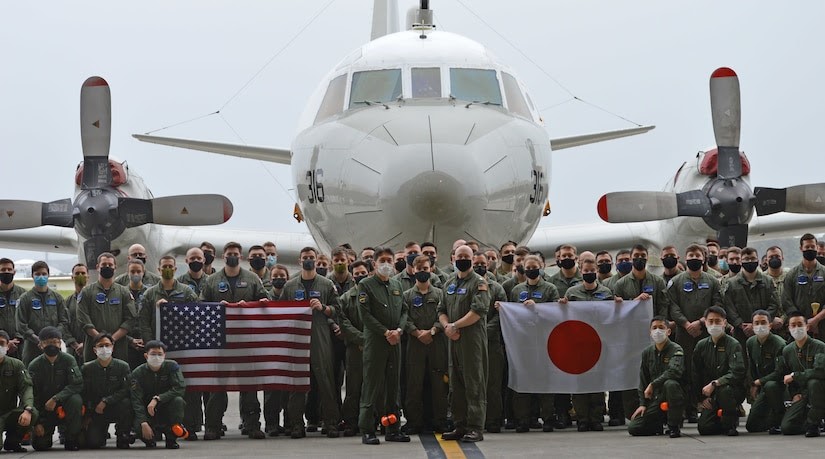As the threat from China grows, the importance of the U.S.-Japanese alliance expands.
Ely Ratner, the assistant secretary of defense for Indo-Pacific Affairs, speaking at the Mount Fuji Dialogue in October stated that “China’s aggressive and coercive military activities in the Taiwan Strait and in waters surrounding Japan … are provocative and destabilizing. China is seeking to establish a new normal concerning Taiwan, and this threatens regional peace and security. Meanwhile, over the last year, we have seen a dramatic increase in People’s Liberation Army non-standard and unsafe air intercepts in the region, designed to coerce and intimidate U.S. and allied forces operating lawfully in international airspace.”
The Council on Foreign Relations notes that There are more than eighty U.S. military facilities in Japan. More U.S. service members are permanently stationed in Japan than in any other foreign country.
Bloomberg News reports that “Japan is set to approve what could be its biggest increase in defense outlays since the end of the war, putting it on a path to become one of the world’s top military spenders.In a Defense Ministry budget request for fiscal 2023 expected by the end of August, Prime Minister Fumio Kishida’s ruling party is looking to double spending over five years from this year’s 5.4 trillion yen ($39.5 billion). Outlays of that scale could propel Japan from ninth in the world for military spending to a likely third spot behind the US and China, according to data from the Stockholm International Peace Research Institute, or SIPRI, which tracks defense spending.”
Ratner also emphasized that North Korea is a third threat with its continuing development of nuclear weapons and its missile program in violation of international law, he said. “These hostile activities are dangerous, reckless and damaging to regional and international security. Moreover, we share serious concerns over the DPRK’s escalatory and destabilizing messaging related to nuclear weapons use.”
The Assistant Secretary emphasizes “These threats call for responses and the United States and Japan are working together to strengthen the treaty alliance between the two nations and modernize deterrence capabilities. We are fundamentally enhancing the alliance’s deterrence and response capabilities to ensure that we maintain a competitive edge…This includes reinforcing extended and integrated deterrence, improving information and cyber security, deepening cooperation in space, cyber and emerging technologies, and coordinating on bilateral planning for contingencies.”
The U.S. State Department maintains that The U.S.-Japan Alliance is the cornerstone of U.S. security interests in Asia and is fundamental to regional stability and prosperity. The Alliance is based on shared vital interests and values, including: the maintenance of stability in the Indo-Pacific region: the preservation and promotion of political and economic freedoms; support for human rights and democratic institutions; and, the expansion of prosperity for the people of both countries and the international community as a whole.
Key regional actors are also enhancing defense cooperation with Tokyo. A Wall Street Journal report disclosed that Australia would deepen defense cooperation with Japan. The two nations will train in Australia’s north, “the latest move by U.S. allies to respond to strategic tensions with China.”
The massive purchase of F-35 fighter jets will dramatically improve Japan’s military capabilities. Tokyo spends more on defense than just eight other nations. Despite the continued existence of Article 9 of the nation’s “Peace Constitution,” the nations armed forces, which represent about 1% of GDP (amid calls to double that figure) are increasingly modern and capable.
The need is clear. In addition to China, threatening actions by North Korea and Russia continue to seek to bully the nation. Moscow and Beijing have cooperated in joint naval maneuvers that clearly target Japanese and American interests in the area.
